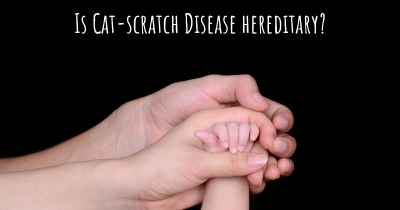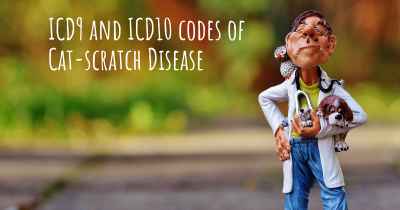What are the latest advances in Cat-scratch Disease?
Here you can see the latest advances and discoveries made regarding Cat-scratch Disease.

Cat-scratch disease (CSD), also known as cat-scratch fever, is a bacterial infection caused by the bacterium Bartonella henselae. It is primarily transmitted to humans through scratches or bites from infected cats. While most cases of CSD are mild and self-limiting, there have been recent advances in understanding the disease, its diagnosis, and treatment.
Advances in Diagnosis
One of the significant advances in diagnosing cat-scratch disease is the development of more accurate and efficient diagnostic tests. Traditionally, CSD diagnosis relied on clinical symptoms and the presence of a scratch or bite from a cat. However, these methods were not always reliable, leading to potential misdiagnosis or delayed treatment.
PCR (polymerase chain reaction) testing has emerged as a valuable tool in diagnosing CSD. This technique allows for the detection of Bartonella henselae DNA in patient samples, such as blood or lymph node tissue. PCR testing offers high sensitivity and specificity, enabling early and accurate diagnosis of CSD.
Understanding the Pathogenesis
Advancements in understanding the pathogenesis of cat-scratch disease have shed light on the mechanisms by which the bacterium Bartonella henselae causes infection. Researchers have identified specific virulence factors and host immune responses that contribute to the development and progression of the disease.
Virulence factors produced by Bartonella henselae play a crucial role in the pathogenesis of CSD. These factors allow the bacterium to adhere to host cells, invade tissues, and evade the immune system. Understanding these virulence factors provides potential targets for the development of new therapeutic interventions.
Furthermore, research has highlighted the importance of the host immune response in determining the severity and outcome of CSD. Studies have shown that individuals with impaired immune systems, such as those with HIV/AIDS or undergoing immunosuppressive therapy, are more susceptible to severe forms of the disease. This knowledge aids in identifying high-risk individuals and implementing appropriate preventive measures.
Treatment Options
While most cases of cat-scratch disease resolve spontaneously without treatment, severe or prolonged infections may require medical intervention. Recent advances have expanded the treatment options for CSD, particularly in cases where complications arise.
Antibiotic therapy remains the primary treatment for cat-scratch disease. The choice of antibiotics depends on the severity of the infection and the presence of complications. Azithromycin and doxycycline are commonly prescribed antibiotics that have shown efficacy against Bartonella henselae. In severe cases, additional antibiotics or surgical intervention may be necessary.
Prevention and Education
Advancements in cat-scratch disease research have also emphasized the importance of prevention and education. Educating both cat owners and healthcare professionals about the risks, symptoms, and appropriate preventive measures can help reduce the incidence and impact of CSD.
Preventive measures include proper cat hygiene, such as regular flea control and avoiding rough play that may lead to scratches or bites. Additionally, prompt wound care, especially after a cat scratch or bite, can help minimize the risk of infection.
Conclusion
In conclusion, recent advances in cat-scratch disease have improved our understanding of its diagnosis, pathogenesis, and treatment. The development of more accurate diagnostic tests, such as PCR, allows for early and precise identification of the infection. Understanding the virulence factors and host immune response provides insights into the disease's mechanisms and potential therapeutic targets. Expanded treatment options, including antibiotic therapy, cater to severe or complicated cases. Lastly, emphasizing prevention and education can help reduce the incidence of cat-scratch disease. Continued research in this field will further enhance our knowledge and management of this bacterial infection.








